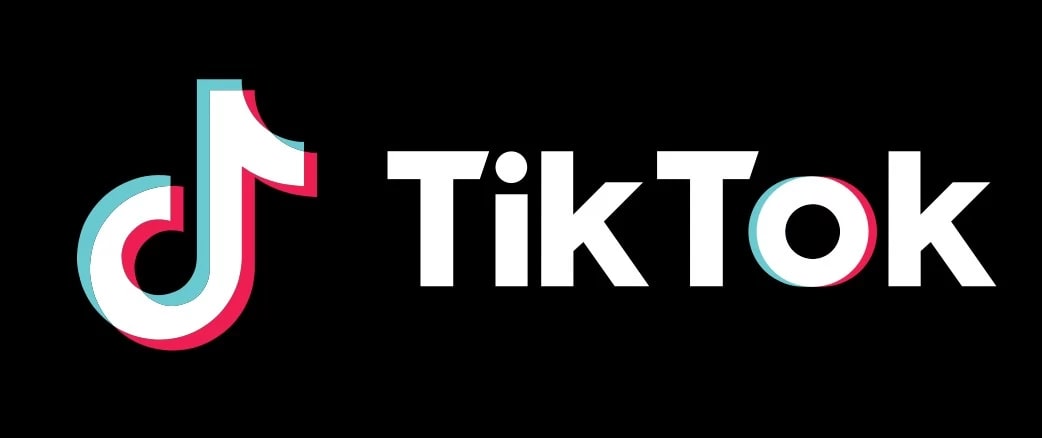Top 20 Important Ecommerce Trends You Need To Know About In 2024

Are you excited about growing your online business? If so, you’ve come to the right spot. In our constantly changing world in 2024, it’s crucial to with the ecommerce trends. This is why knowing the upcoming trends for 2024 is not just an option; it’s a must if you want your online business to do well. Come with us as we explore the future of dropshipping and reveal important insights that can lead to your business success.
Why you need to stay up to date with the ecommerce trends
Understanding the upcoming ecommerce trends is essential for anyone aiming to operate a successful online business in 2024. In today’s rapidly changing digital landscape, being knowledgeable about the latest advancements can significantly impact your success.

With more businesses transitioning to the online realm, the market is becoming increasingly crowded. To set your brand apart, provide unique products or services, and capture a larger market share, staying ahead of the competition is crucial.
Keeping yourself informed enables you to adjust your business strategies to align with market demands. Investing in growing areas can lead to higher returns, while avoiding declining ecommerce trends in 2024 can save you time and money. By anticipating shifts in the ecommerce landscape, you can establish a long-term business strategy that positions you for sustained success. This proactive approach allows you to outpace your rivals and adapt to industry changes effectively.
Ecommerce trends in 2024
The role of TikTok Shopping
One of the most significant trends in 2024 is the emergence of TikTok Shop. It is going to become a significant hub for commerce among Gen Z consumers. According to reports from Insider Intelligence, 68% of Gen Zers are likely to make direct purchases on TikTok in 2024.

TikTok Shop offers various benefits for businesses aiming to enhance their online sales. Firstly, it grants access to its extensive and continually growing user base, boasting over a billion monthly active users. This vast audience presents an exceptional opportunity for businesses to reach new customers and expand their market presence. Moreover, TikTok’s algorithm customizes all content, increasing the likelihood of strong engagement by connecting with the right audience. By introducing features such as shoppable ads, product showcases, and collaborations with content creators, TikTok is enhancing the way businesses engage with their audience and market their products. Utilizing native checkout options can lead to improved conversion rates and a higher return on advertising investment.

Here’s how TikTok Shop is transforming ecommerce by merging social media interaction with online shopping. It enables brands to seamlessly incorporate their product catalogs into their TikTok profiles, offering features like in-video product links, live-stream shopping, and a dedicated shopping section. With TikTok Shop, businesses can manage their ecommerce operations using a marketplace model, while creators can spotlight and endorse products they endorse to their community, unlocking new revenue streams. So, if you aim to thrive in ecommerce in 2024, establishing your own TikTok shop is a must!
Data privacy and transparency

In 2024, data privacy will become a top priority, as consumers are now more cautious than ever regarding the collection and utilization of their personal information. It is essential for marketers to give precedence to data privacy and transparency. This is because the upcoming year will usher in more stringent regulations and evolving consumer demands.
Fulfillment improvements
Fulfillment execution is another one of the rising ecommerce trends for 2024. This trend focuses on enhancing the efficiency of fulfillment operations, encompassing both the retailer’s physical and digital assets. It achieves this through real-time analysis and adjustments to inventory, workforce, and processes.

Moreover, touchless interactions are going to become more widespread in 2024. These touchless experiences involve contact-free interactions throughout the entire shopping journey, emphasizing safety and hygiene. It is now a fundamental expectation among consumers for retailers to incorporate sanitization procedures into their operations and provide convenient, hygienic methods for researching, purchasing, and consuming goods.
Thanks to advancements in logistics and supply chain management, the availability of same-day or next-day delivery is on the rise. These ecommerce trends will likely persist in 2024 as consumers increasingly demand swift delivery times.
Artificial intelligence and machine learning in ecommerce
AI and machine learning are undergoing a profound transformation in how businesses engage with their customers. AI technologies have the capability to examine customer data and deliver tailored shopping experiences.

For instance, recommendation algorithms have the ability to propose products by considering a customer’s past purchases, thereby elevating the suitability of product recommendations. Furthermore, AI can be harnessed to elevate customer service by deploying chatbots capable of addressing frequently asked questions, offering product recommendations, and delivering prompt assistance. This not only enhances the efficiency of customer service but also has the potential to boost customer satisfaction. Voice assistants like Amazon’s Alexa and Google Assistant are going to become more prevalent in the realm of ecommerce.
Augmented reality and virtual reality
AR and VR technologies are revolutionizing the online shopping experience.

VR technologies enable consumers to visualize products within their own surroundings before completing a purchase. This capability can address certain shortcomings of ecommerce, such as the inability to physically try or handle a product. As an illustration, consider a furniture store offering an AR app that enables customers to preview how a sofa or table would appear in their own residence. This feature can enhance customer trust in their purchasing choice and consequently, decrease the frequency of product returns.
Social media

As stated in a Retail Drive report, a substantial 85% of Gen Z individuals are swayed by social media in their shopping choices. The fusion of social media and ecommerce empowers users to explore and purchase items directly via social networks. Prominent social media platforms such as Facebook, Instagram, and Pinterest are progressively integrating ecommerce functionalities. This not only furnishes users with a more unified shopping experience but also enables brands to engage with their customers in a more individualized and direct manner.
Green economy

Consumers are increasingly demonstrating a heightened concern for sustainability, which is reflected in their shopping preferences. A considerable number of consumers are willing to invest extra in products that are eco-friendly or produced with ethical considerations. In reaction to this shift in consumer behavior, numerous ecommerce enterprises are embracing more eco-conscious practices. For instance, businesses may opt for sustainable packaging, work towards diminishing carbon emissions in their supply chain, or compensate for carbon emissions stemming from their operations.
Omnichannel ecommerce
Omnichannel retailing is a strategy focused on delivering customers a smooth shopping experience that spans various channels, encompassing online, mobile, and brick-and-mortar stores. This approach empowers customers to engage with brands through the channel of their preference, enhancing convenience. Furthermore, it can aid ecommerce firms in bolstering customer loyalty and boosting sales.
Mobile commerce

Mobile devices are poised to take center stage as the leading platform for ecommerce transactions. Projections indicate that by the year 2024, mobile commerce is anticipated to make up a substantial 72.9% of the total ecommerce sales volume.
Blockchain for supply chain transparency

Blockchain technology has been a part of the ecommerce sector for some time, and its usage is progressing. A blockchain operates as an unmodifiable ledger, where information can be added but not deleted, ensuring transparency within the supply chain.
Direct messages for customer service

A growing number of customers are now using Direct Messages on platforms such as Instagram or Twitter to communicate. This necessitates a more comprehensive customer service approach that extends across multiple platforms.
Second-hand sales
Second-hand sales are gaining significant popularity, particularly among younger consumers. This trend is propelled by a growing preference for more sustainable and budget-friendly shopping alternatives. Consequently, numerous ecommerce enterprises are now providing second-hand products, either on their own platforms or through collaborations with other businesses.
Livestream shopping

These ecommerce trends, popular in Asia, are making their way to the West in 2024. It involves real-time online shopping events, often hosted by influencers. These events can create a sense of urgency and community among shoppers.
Research online, purchase offline (ROPO)
Numerous customers conduct online research about products before making in-store purchases. Ecommerce businesses can capitalize on this trend by offering comprehensive product information and customer reviews online. Some ecommerce platforms are introducing image search functionalities, enabling customers to upload images and discover similar products. This feature can be especially beneficial in the realms of fashion and home decor ecommerce.
Fair pricing
Even if pricing isn’t your business’s strong suit, customers have elevated expectations for it in 2024.

Price tags mockup
As per Retail Week, 74% of shoppers anticipate retailers to adjust their prices to account for any rise in inflation during 2024. This suggests that consumers are becoming increasingly price-conscious. So brands may need to explore avenues for delivering value while still maintaining competitive prices. Value, however, can manifest in various ways; for instance, exceptional service quality and complimentary perks can enhance a brand’s reputation, even if it can’t heavily rely on discounts.
Cross-selling
Retention has evolved beyond merely securing repeat purchases; it now entails product diversification, encouraging customers to explore a wider range of products and categories. When a business can meet various needs for its customers, it significantly enhances the likelihood of retaining their loyalty. In 2024, a key aspect of retention strategies will revolve around expanding this scope of offerings.
Subscription enhancements
A well-executed subscription model empowers businesses to invest in their most valuable assets: loyal customers, who, on average, hold a staggering 22 times more value than other customers.

Furthermore, the article elucidates how a subscription model can fortify your ecommerce enterprise, even amidst uncertain economic conditions. When faced with the challenges of a recession, the most advantageous step for your business is to establish a dependable stream of recurring revenue, a feat that subscriptions can facilitate. This model not only revolutionizes day-to-day operations but also facilitates meaningful long-term planning — a pivotal factor for sales forecasting.
Currently, the subscription ecommerce market is anticipated to expand beyond $450 billion by 2025. There exists a diverse array of subscription models, including standard subscribe-and-save, pre-paid, build-a-box, giftable, and more. Selecting the most suitable subscription model for your business isn’t a one-size-fits-all decision. It necessitates contemplation of your product’s nature, its frequency of need among customers, and whether it remains consistent or varies with each subscription cycle.
Rise of reliability
Expenditure on TikTok and various other social platforms is on the rise, and concurrently, the proliferation of low-quality items is becoming more pronounced. Numerous budget-friendly products are catering to specific niches. Consequently, it’s imperative to safeguard your products from being perceived as subpar or inferior.
In 2024, brands will be channeling more resources into fostering trust and upholding product quality. This is essential for creating a sense of confidence among potential new customers, especially when they are exploring an unfamiliar brand. Thus, authenticity and genuine customer feedback will assume a pivotal role in establishing trust in 2024, prompting the integration of user-generated content and reviews into social platforms to an even greater extent.
Fashion
According to a report by Statista, the revenue in the fashion market is projected to reach $760 billion by the end of 2024, with an annual growth rate of 7.53%. The number of users in the ecommerce market is expected to amount to 2.9 billion users by 2028.
Handmade toys
As per insights from a Forbes article, one of the most lucrative ecommerce niches in 2024 is centered around handmade toys. If you possess a passion for sewing, knitting, or crocheting, this presents a golden opportunity. There are multiple effective strategies for marketing handmade toys online.

To start, staying well-informed about the latest ecommerce trends is paramount in 2024. Once you’ve identified prevailing trends, you can source relevant knitting, crocheting, or sewing patterns to craft these toys from scratch. Alternatively, you can provide personalized toy-making services at a premium rate, tailoring them to align with parents’ nursery themes or children’s preferences. For a more specialized approach, consider crafting nostalgic gifts aimed at adults.

If you opt for trend-based crafting, conducting thorough research into current ecommerce trends is crucial. You can accomplish this by reaching out to fellow crafters to learn about the top-selling items in their handmade toy collections. Participating in dedicated Facebook groups dedicated to your craft can be a convenient method for gathering such insights.
On the other hand, if you choose to create custom toys, it’s essential to secure a deposit from customers upfront, covering the complete material cost before commencing the toy crafting process.
Build a successful business with AliDropship

Our primary aim is to help you turn your dream of operating an ecommerce business into a reality with minimal difficulties. You can begin creating your ideal online store with AliDropship. We not only assist you in setting up a standard store but also create a unique online space that accurately reflects your vision. Your store will showcase the latest dropshipping products, making it a hot topic on the internet. Our goal is not only to get your store up and running but also to ensure that it generates significant profits. Our store designs are modern, user-friendly, and crafted to keep your customers engaged and shopping for longer.
Managing your business using AliDropship’s platform is a breeze. Our platform is designed with your requirements in mind, providing easy order management, quick product updates, and the ability to connect with customers worldwide. Our product catalog is a valuable resource, offering detailed descriptions to help you effectively market your products. Moreover, our fulfillment center prioritizes speed, ensuring that your customers receive their orders promptly.
- AliDropship is more than just a platform; it serves as your gateway to substantial earnings. Here’s how we enhance your business:
- We personally choose high-demand items that align perfectly with your store’s theme.
- Each sale results in increased revenue for your business.
- Easily restock top-selling items at lower costs, further boosting your profits.
- We take care of everything from packing to shipping, ensuring your products reach your customers quickly and securely.
Now that you are aware of the upcoming ecommerce trends in 2024, your business success is assured! Begin dropshipping the top-selling products for 2024 and reach your ecommerce objectives with AliDropship!














